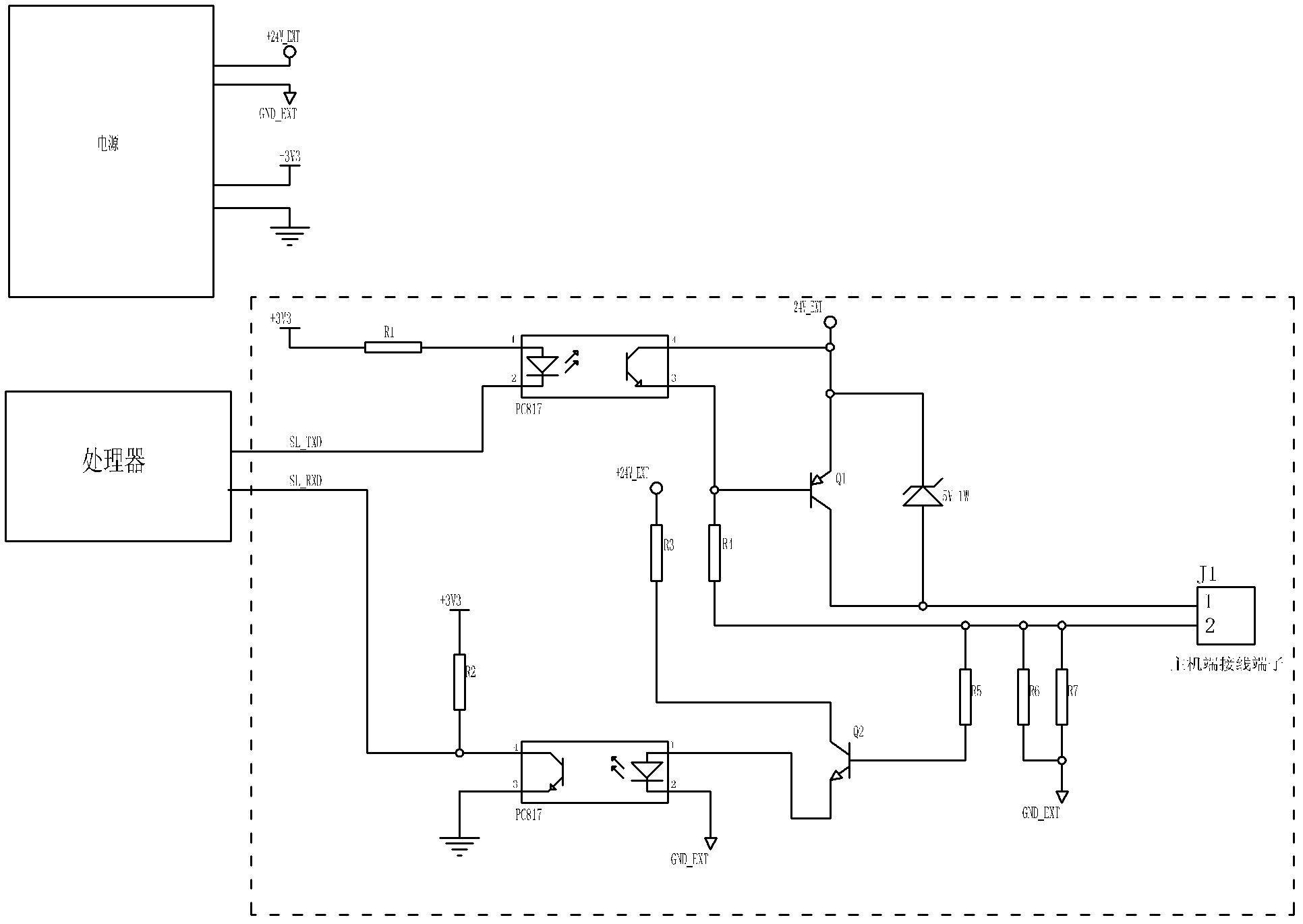Non-polar two-line system communication circuit
A communication circuit, two-wire technology, applied in the fixed station through two conductor transmission systems and other directions, can solve the problems of wiring errors, damage to master and slave components, and high costs, and achieve the effect of reducing requirements.
- Summary
- Abstract
- Description
- Claims
- Application Information
AI Technical Summary
Problems solved by technology
Method used
Image
Examples
Embodiment Construction
[0013] The technical solution of the present invention will be further described in detail below in conjunction with the accompanying drawings and embodiments.
[0014] like figure 1 As shown, in air-conditioning equipment or other household appliances in the prior art, a four-wire transmission method is used for communication between the master end and the slave end, that is, the TXD pins and RXD pins of the microprocessors at the master and slave end are connected to each other. , the two power lines on the host end, together with the signal line, are drawn out from the terminal block, and serve as power supply lines for the slave end, so that the host end supplies power to the slave end. The master end may be an air conditioner indoor unit controller, and the slave end may be a thermostat of the air conditioner.
[0015] like figure 2 As shown, the non-polar two-wire communication circuit of the present invention has a master end and a slave end, the master end is provid...
PUM
 Login to View More
Login to View More Abstract
Description
Claims
Application Information
 Login to View More
Login to View More - R&D
- Intellectual Property
- Life Sciences
- Materials
- Tech Scout
- Unparalleled Data Quality
- Higher Quality Content
- 60% Fewer Hallucinations
Browse by: Latest US Patents, China's latest patents, Technical Efficacy Thesaurus, Application Domain, Technology Topic, Popular Technical Reports.
© 2025 PatSnap. All rights reserved.Legal|Privacy policy|Modern Slavery Act Transparency Statement|Sitemap|About US| Contact US: help@patsnap.com



